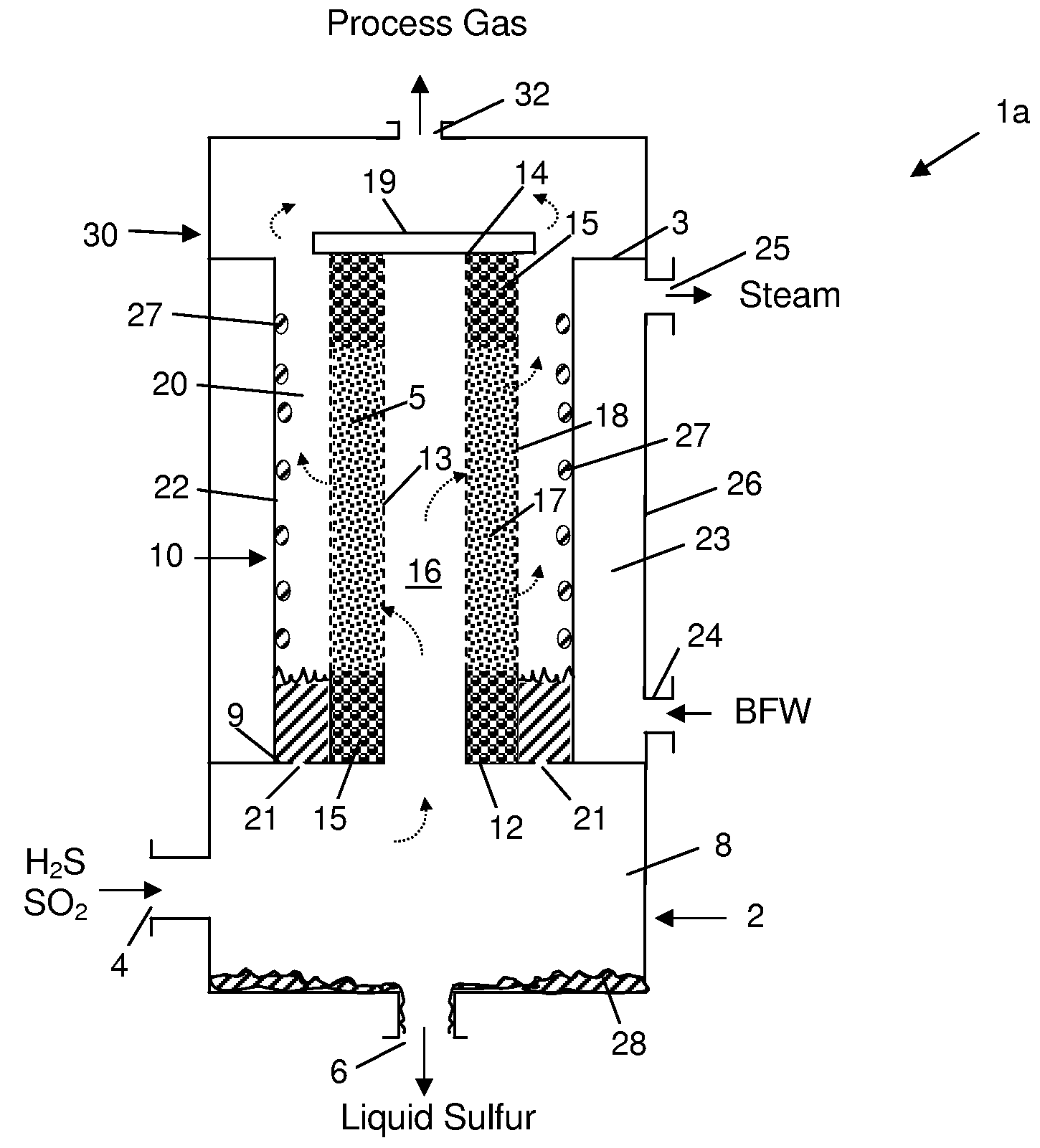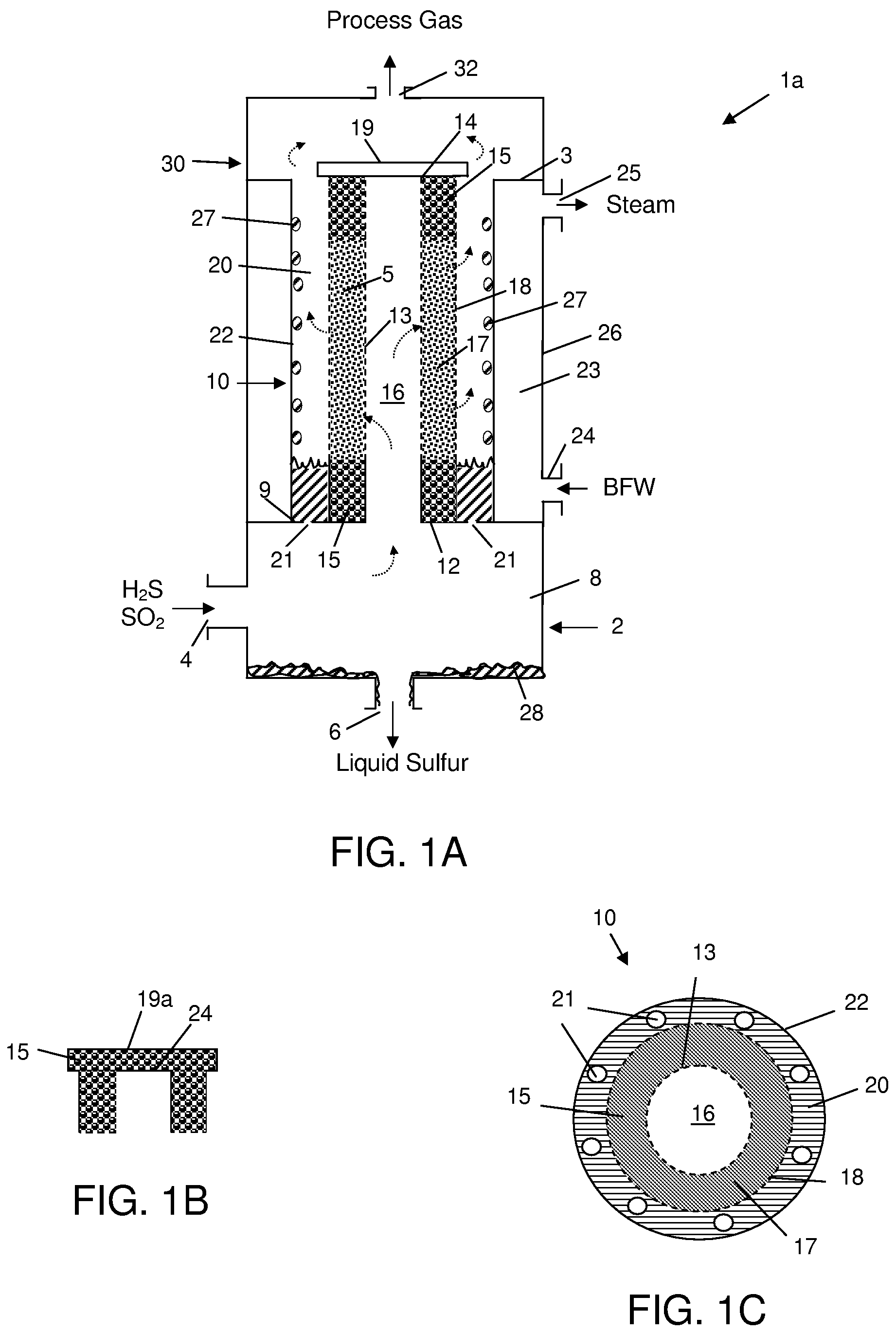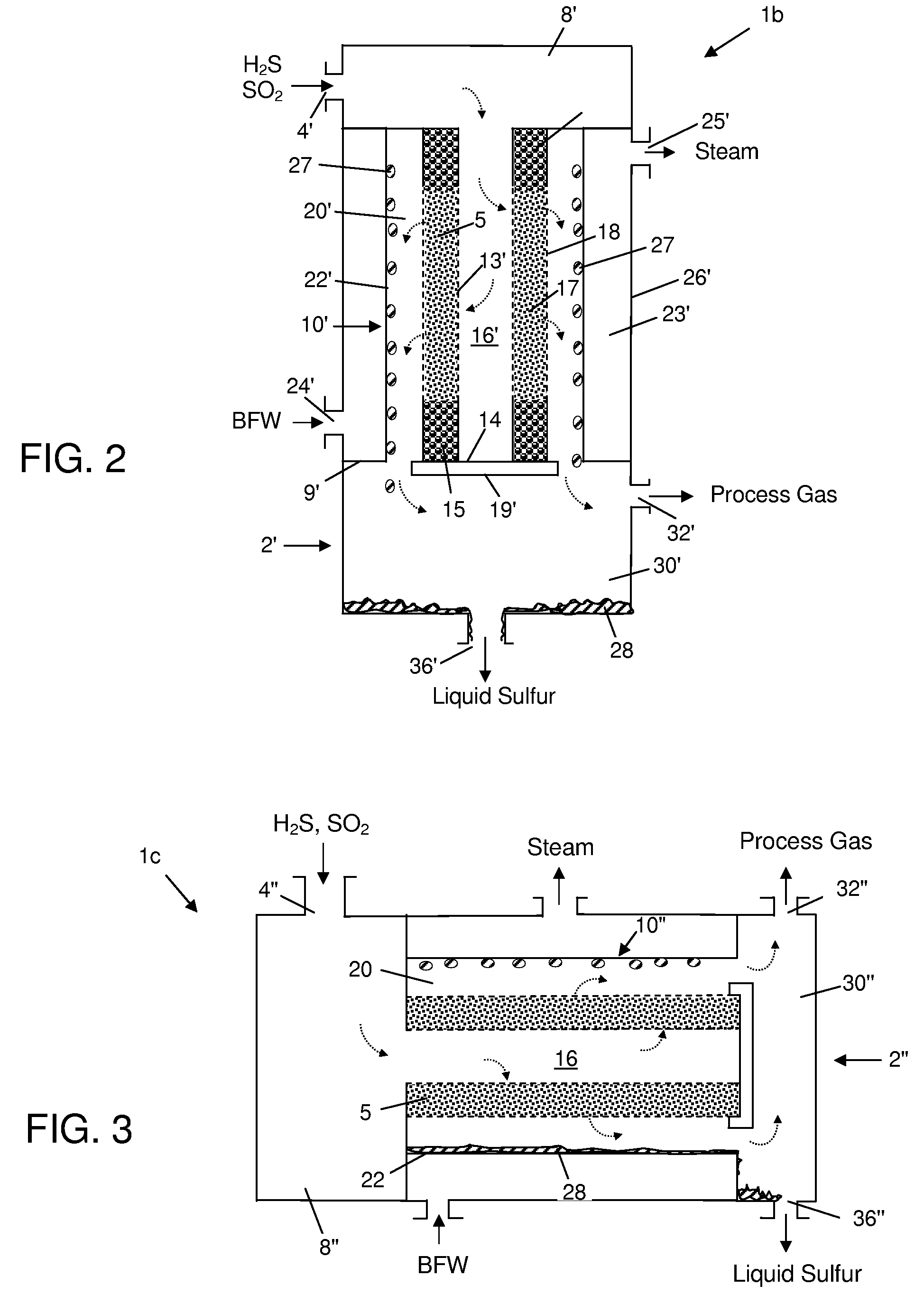Increased capacity sulfur recovery plant and process for recovering elemental sulfur
a sulfur recovery plant and increased capacity technology, applied in the direction of sulfur preparation/purification, energy input, teeth capping, etc., can solve the problems of reducing the capacity of the plant, reducing the conversion rate of 70 %, and improving the recovery almost invariably
- Summary
- Abstract
- Description
- Claims
- Application Information
AI Technical Summary
Benefits of technology
Problems solved by technology
Method used
Image
Examples
Embodiment Construction
[0056]An improved Claus sulfur recovery plant contains one or more single-stage or multi-stage compact tubular Claus catalytic reactor units. These new or improved Claus plants may be additionally improved by inclusion of one or more compact heat exchangers containing cooling tubes that are filled with a heat transfer enhancement medium.
Compact, Tubular Claus Catalytic Reactor Units.
[0057]Toward decreasing the cost and complexity of the catalytic section of a Claus sulfur recovery plant, a study of the kinetics of the Claus reaction (Equation 3) was conducted, and the experimental data is shown in Table 1. Various parameters that were computed from the data are listed in Table 2, including estimated catalyst volumes required in each stage of a Claus plant in order to produce about 108 long tons per day (LTPD) of sulfur. From this study it was determined that the catalyst volumes actually required are much smaller than the conventionally designed volumes, e.g., about 434 cu ft of cat...
PUM
| Property | Measurement | Unit |
|---|---|---|
| temperature | aaaaa | aaaaa |
| temperature | aaaaa | aaaaa |
| pressure drop | aaaaa | aaaaa |
Abstract
Description
Claims
Application Information
 Login to View More
Login to View More - R&D
- Intellectual Property
- Life Sciences
- Materials
- Tech Scout
- Unparalleled Data Quality
- Higher Quality Content
- 60% Fewer Hallucinations
Browse by: Latest US Patents, China's latest patents, Technical Efficacy Thesaurus, Application Domain, Technology Topic, Popular Technical Reports.
© 2025 PatSnap. All rights reserved.Legal|Privacy policy|Modern Slavery Act Transparency Statement|Sitemap|About US| Contact US: help@patsnap.com



